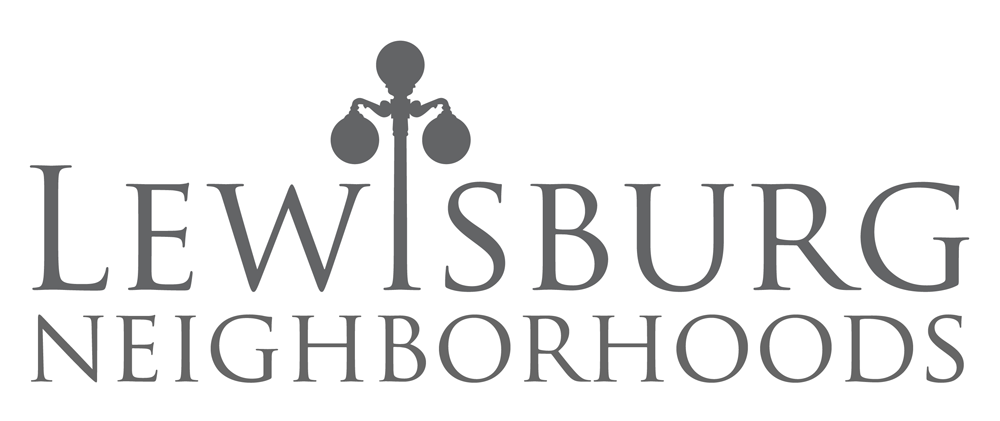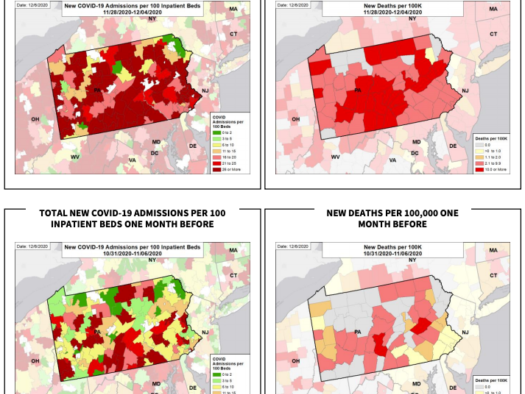The White House Coronavirus Task Force report for PA issued on Dec 6 includes many new maps and stats about hospital capacity across the country and throughout the state. The document points out, "We are also seeing clear improvement in many European countries that implemented strong public and private mitigation but preserved schooling; the majority of the United States is not mitigating similarly." In other words, we could be in a position to keep schools open, but we are not doing what it takes to make that possible. Including locally.
This is an indictment both of governmental inaction or slowness to act and the widespread rejection of mitigation measures on the part of individuals. Many people continue to imagine that these warning and recommendations only really apply in other places but that is a dangerous delusion. People still say that while we have large numbers of cases and deaths are high, it's really not that bad. It is only possible to take that position if you completely ignore the fact that the deaths are keyed to the number of cases reported about three weeks ago. If we didn't know that, it would indeed look like people were over-reacting right now. The catch: some of us know it, but not everyone.
We had a large increase in cases regionally in the first three weeks of November, which shows now in hospitalizations and deaths here. We have had twice that many additional cases in the three weeks since then... There is a separate post in the works about those numbers in detail and about how the subset of people who have the patience to read the numbers need to mobilize and start working the phones and their personal networks to try to improve our outlook person by person.

We have shared previously information about how school planning was proceeding for the start of the fall semester and an update as additional info became available, putting our local and state decision-making in context with that same process as it unfolded in other parts of the country. It has admittedly been confusing all along and it can be hard to follow what's actually happening. In a nutshell, a multi-layered (and confusing) set of non-binding guidelines and recommendations were put in place. Local districts retain final control and so for the most part, both in our county and across the state, districts have largely ignored the recommendations from the beginning as to whether conditions were right for in-person classes, opting again and again to reopen even when not really advisable. To cap it all off, the overwhelmed Department of Health is providing some questionable or perhaps just questionably interpreted readings of their own recommendations as we move through the newly established decision-making process.
The impulse to opt for in-person instruction at all costs is understandable because virtual school has many downsides, including simply not being workable for a portion of the students. Staying open or reopening when not called for also doesn't have immediately visible consequences in that it takes time for cases to take off, children are quite likely to have mild or even asymptomatic cases, and mitigation measures implemented in the schools can slow the spread when numbers are relatively low (though not as low as recommended). There are also confounding factors (in the absence of widespread, frequent, accessible, accurate testing) like the choice of some parents to avoid having their children tested for COVID in hopes of avoiding contributing to a realization that the local school probably ought to go virtual.
Many districts limped along more or less open for in person instruction under less than ideal conditions up to Thanksgiving. Part of the confusion about whether schools should be open stems from a desire to read the schools as a thing apart from the community, but from the very beginning, as outlined in our first article on the topic, the CDC and local public health officials made clear that it was community transmission levels that should guide decision-making and that schools and school leaders would be well-served by participating actively in public health messaging campaigns to get as many people in the community to implement mitigation measures throughout their personal lives in order to make it possible to keep the schools open. Local districts have declined to do that and have in recent weeks started to ignore guidelines about case counts in ever more extreme ways, looking for every loophole and opening in the recommendations they can find, in defiance of the logic of the decision-making process outlined.
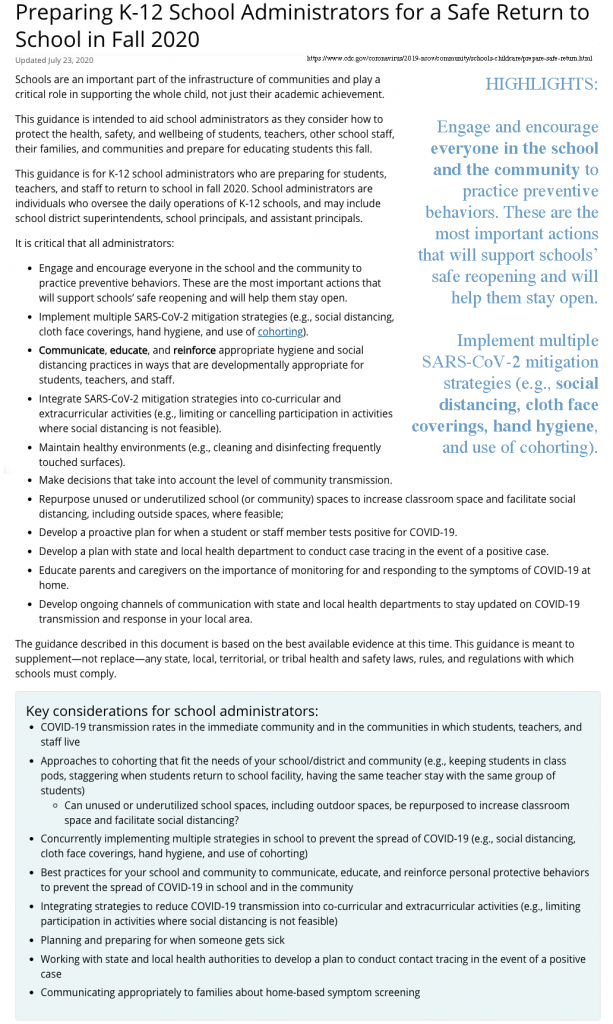
Here is a review of what the guidelines are and how they are intended to be used.
To start off with, the state Department of Health and the state Department of Education came up with a rubrick, based on CDC recommendations, for how a given district would go about selecting their "instructional model," i.e. whether they would be open for in-person, modified, or fully virtual instruction. Those recommendations laid out three different levels of community spread -- low, moderate, and substantial -- and established how they would be defined in PA. They also gave suggestions for which instructional models would be appropriate at the different levels, shown here.
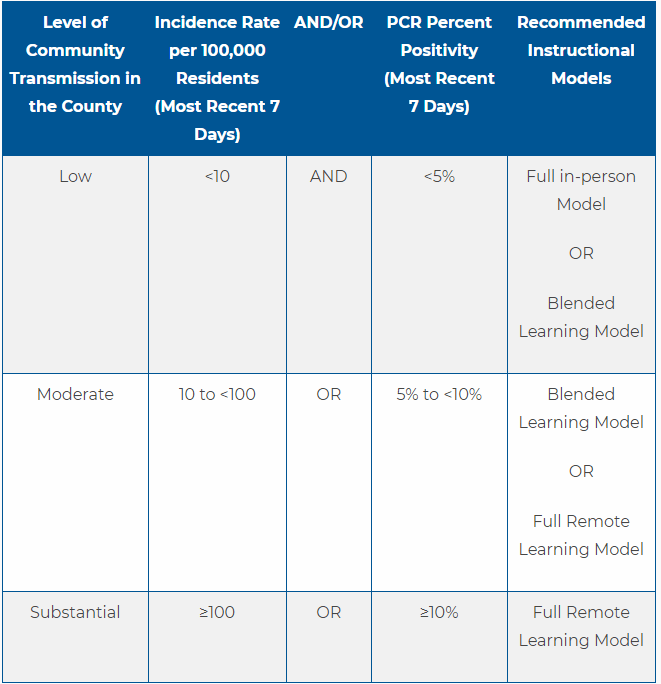
Then, because not all areas have local health departments and there may be some question as to how the data should be read, for instance, what 7-day period would be under consideration and how to assess the test positivity rate, the Department of Health set up the Early Warning Monitoring System Dashboard which provides the key instructional decision-making stats for every county in the state for each Saturday-Friday week and comparison to the preceding week on a single page. There is also a table that just notes for each county what the level of community spread was for each week. So no one even has to keep track of this much less figure it out on their own.
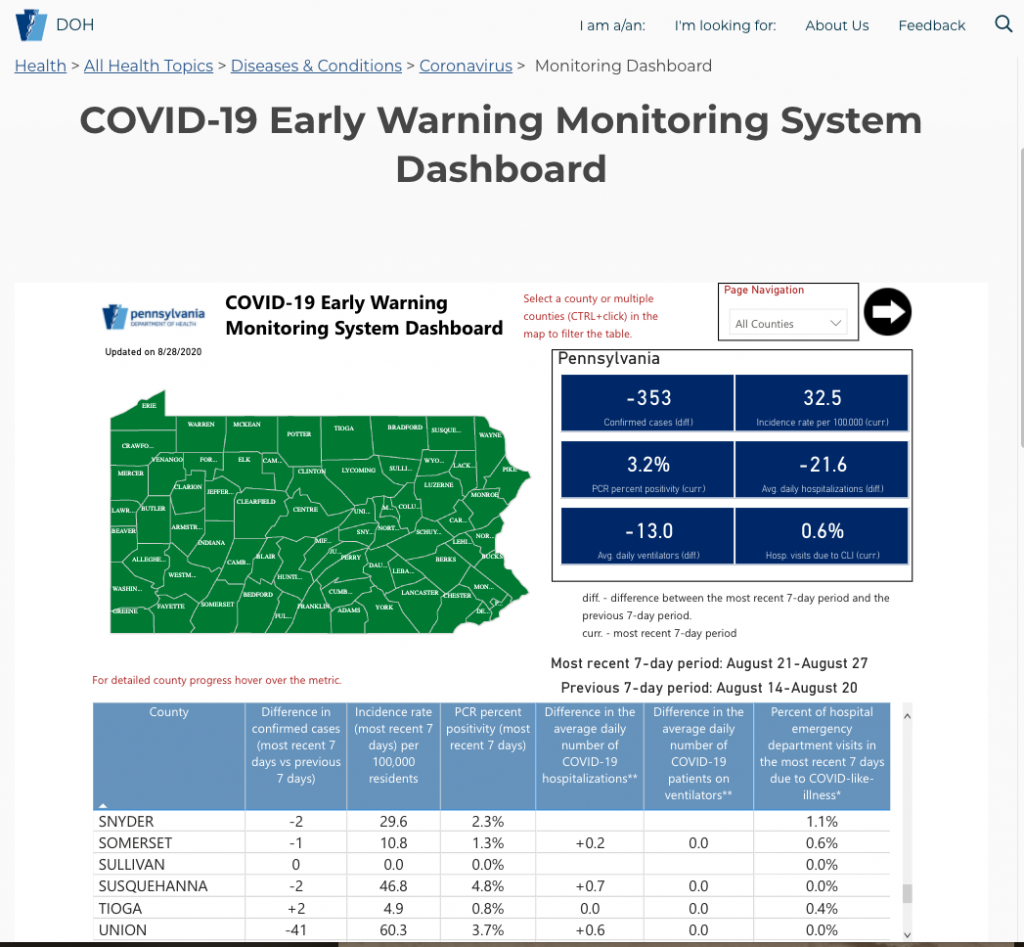
In all of this, it is made abundantly clear that the level of spread to be used in the initial decision of whether it is the right time to try to be open and under what arrangements is the community spread, that is, the numbers for the entire county. But what happens if, in keeping with the local level of community spread, your district is operating either fully face-to-face or partially so and then you start to see cases in students and/or staff? What would precipitate closing schools again? And how long would they be closed for? The Department of Education also created a rubrick to guide districts as to how to deal with cases occurring within their walls. This does not replace the earlier-mentioned overall assessment of community spread. It is another layer to be applied if the schools are open but then cases start to appear. It describes in fact the circumstances under which it would be appropriate to remain open as well as when a given building should be closed and cleaned and how long the closure should last.
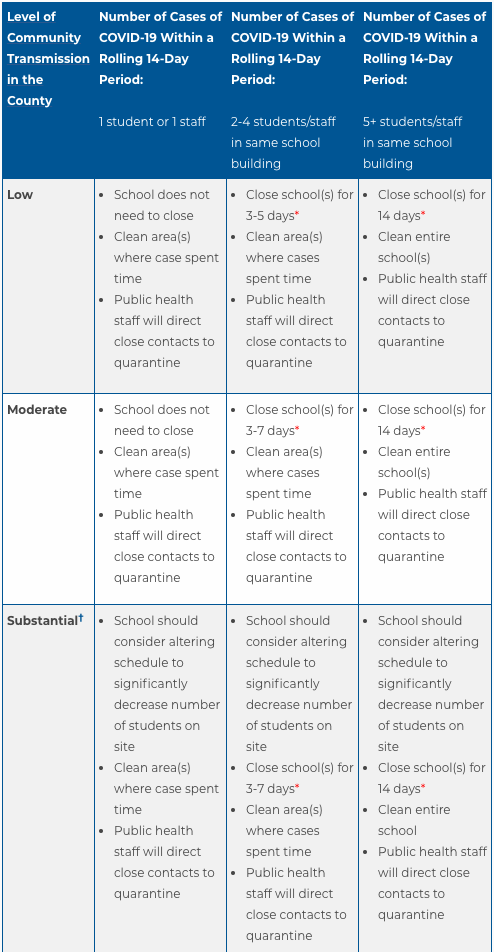
This does not mean that suddenly the level of community spread is irrelevant. It is just about refinement and responsiveness to the way infection is playing out locally.
So how has all this worked out? Not unsurprisingly many districts across the state, having been given this guidance but also retaining local control, have largely jettisoned the initial community spread rubrick. So that means they have opened, reopened, or remained open even well into moderate and substantial community spread. Then when cases do start happening in the school, first individual buildings and eventually full districts shut back down perhaps briefly, perhaps for several weeks.
The CDC has another more detailed chart helping to identify the level of risk associated with in-person schooling. In addition to incidence rate and test positivity, it gives benchmarking levels for several more criteria including local hospital capacity. If anything, there are more things that might be considered in the community, not less. And they are all considered relevant.
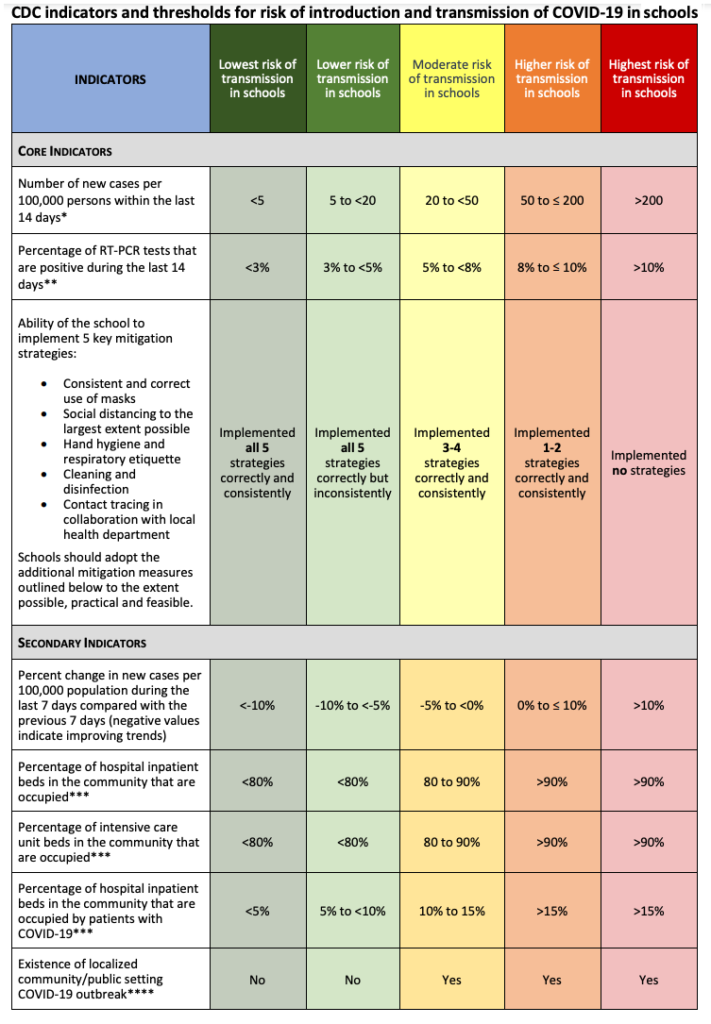
Once schools have been closed, the question of how and when to reopen really ought to start you back at the beginning, with an assessment of current community spread. Unfortunately, many districts, including ours are instead going with the census of cases among the school population at that point. This would make sense if the community spread were fairly consistent (for example as it was for much of the summer here or like it has been in European countries when they reopened their schools, with test positivity below 3% and incidence rates below 10/100K) between the time of the closure and the time of deciding to reopen. But against the backdrop of steeply rising incidence rates and test positivity, it makes no sense whatsoever. If levels were low, you would go back to that point in the process, confirm that it was a reasonable time in general terms to have the schools open and then check that you've met the school-specific criteria. As has been pointed out repeatedly, we are not in that situation right now either locally or across the state.
In Lewisburg, after several weeks of fully remote instruction for all grade levels the week of and following Thanksgiving, the district has just declared that elementary and middle school students are to be in person this week, the last full week before winter break. The community is well beyond even the most liberal definition of substantial community spread; even just considering the cases outside the prison system, we are currently at around 500 new cases per 100k in 7 days. Test positivity rates are also well-higher than warrants in person instruction. But according to recent communication from the district, they have decided to look at the number of cases happening in the schools over the past two weeks, i.e. not among all students and staff but just among the limited number of students and the staff who were in the buildings while the district was officially fully remote. In explaining the decision, the district cites the FAQs on the Department of Education school closure and reopening guidelines in the event of a case, but it really seems like this is a failure of logic and clearly the decision-making flowchart should revert back to the initial question about whether it is an appropriate time to reopen in light of overall community spread. In those terms, the time is not right.

The thinking goes that students are generally safer when they are in school rather than just left to their own devices. Under current circumstances, that is debatable and it seems like staff are probably not at all in the same boat of being safer in school. They are being told to work in what are arguably unacceptably risky conditions. Those conditions could be mitigated if they were issued N95 masks and face shields, but as we all know, there are not a lot of those available anywhere right now.

The kicker is that having the schools open fully during moderate and substantial community spread probably in many cases winds up contributing to additional chains of transmission and helps guarantee that spread continues growing and therefore that schools will have to close again and stay closed for longer. As of now all but one district in the entire state have been at substantial transmission for two weeks. This is not simply because schools have been open in person, but it is related. As stated at the outset, we COULD have schools open in person, but we are NOT doing what it takes to make that possible.
To repeat the final line of the reopening email from the district: "we hope that everyone in our community takes all the steps necessary to keep themselves and their families safe." It would be great to see a LOT more about what that means and how important it is. Are we all on board and in the know now about the need for masks, distancing, hygiene, and isolation? How have people been approaching their holiday celebrations? Is the threat of indoor gathering understood yet? And has it sunk in that our personal decisions have an impact on whether the schools can continue to operate in person or not? We need better, clearer, stronger messaging AND we need consistent, comprehensive, careful implementation of infection mitigation. Step it up, people!
